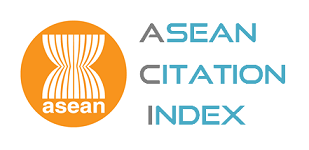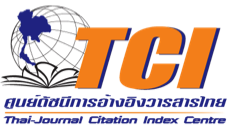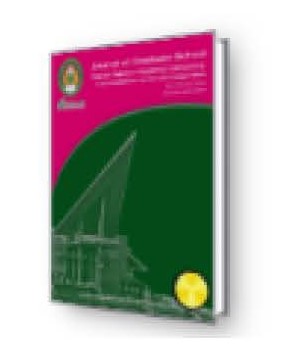การพัฒนารูปแบบการจัดการพลังงานเพื่อเพิ่มประสิทธิภาพ การใช้พลังงานไฟฟ้าในชุมชน
Abstract
การพัฒนารูปแบบการจัดการพลังงานเพื่อเพิ่มประสิทธิภาพการใช้พลังงานไฟฟ้าในชุมชน
THE DEVELOPMENT OF ENERGY MANAGEMENT MODEL FOR IMPROVEMENT EFFICIENCY OF ELECTRICITY UTILIZATION IN COMMUNITY
บทคัดย่อ
การวิจัยครั้งนี้มีวัตถุประสงค์เพื่อ 1) ศึกษาสภาพการใช้พลังงานไฟฟ้าและความต้องการประหยัดพลังงานไฟฟ้าในมหาวิทยาลัยราชภัฏมหาสารคาม 2) พัฒนารูปแบบการจัดการพลังงานเพื่อเพิ่มประสิทธิภาพการใช้พลังงานไฟฟ้าในมหาวิทยาลัยราชภัฏมหาสารคาม 3) ศึกษาการขยายผลการใช้รูปแบบการจัดการพลังงานเพื่อเพิ่มประสิทธิภาพการใช้พลังงานไฟฟ้ามาขับเคลื่อนในชุมชนบ้านกุดแคน โดยใช้ระเบียบวิธีวิจัยแบบผสานวิธี คือ การวิจัยเชิงคุณภาพและการวิจัยเชิงปริมาณ ขอบเขตการวิจัยแบ่งเป็น 3 ระยะ ระยะที่ 1 ศึกษาสภาพการใช้พลังงานไฟฟ้าและความต้องการประหยัดพลังงานไฟฟ้าในมหาวิทยาลัยราชภัฏมหาสารคาม กลุ่มตัวอย่าง คือ บุคลากรในมหาวิทยาลัยราชภัฏมหาสารคาม ซึ่งได้มาจากการเปิดตารางเครจซี่และมอร์แกน จำนวน 287 คน ได้มาโดยวิธีการสุ่มอย่างง่ายโดยวิธีจับฉลาก ระยะที่ 2 การพัฒนารูปแบบการจัดการพลังงานเพื่อเพิ่มประสิทธิภาพการใช้พลังงานไฟฟ้าในมหาวิทยาลัยราชภัฏมหาสารคาม กลุ่มตัวอย่างคือ บุคลากรในคณะวิทยาศาสตร์และเทคโนโลยี มหาวิทยาลัยราชภัฏมหาสารคาม จำนวน 15 คน ได้มาโดยวิธีการสุ่มอย่างง่ายโดยวิธีจับฉลาก ระยะที่ 3 ขยายผลรูปแบบการจัดการพลังงานเพื่อเพิ่มประสิทธิภาพการใช้พลังงานไฟฟ้ามาขับเคลื่อนในชุมชนบ้านกุดแคน กลุ่มเป้าหมายขยายผลการใช้ระบบการจัดการพลังงานเพื่อเพิ่มประสิทธิภาพการใช้พลังงานไฟฟ้าในชุมชนคือ ชาวบ้านในชุมชนบ้านกุดแคน หมู่ที่ 2 และหมู่ที่ 6 ตำบลหนองโน อำเภอเมือง จังหวัดมหาสารคาม จำนวน 5 ครัวเรือน ได้มาโดยวิธีการเลือกแบบเจาะจง เครื่องมือในการวิจัย แบบสำรวจ แบบสัมภาษณ์แบบมีโครงสร้างและไม่มีโครงสร้าง แบบประเมินรูปแบบ แบบวัดความรู้ความเข้าใจ แบบประเมินการฝึกปฏิบัติ และแบบสอบถามความพึงพอใจ สถิติที่ใช้ในการวิเคราะห์ข้อมูล ร้อยละ ค่าเฉลี่ย ส่วนเบี่ยงเบนมาตรฐาน และค่าดัชนีความสอดคล้อง การนำเสนอผลการวิจัยแบบพรรณนาวิเคราะห์และการนำเสนอแบบตาราง
ผลการศึกษา
1. สภาพการใช้พลังงานไฟฟ้าและความต้องการประหยัดพลังงานไฟฟ้าในมหาวิทยาลัยราชภัฏมหาสารคาม พบว่า ผลการวัดความรู้ความเข้าใจเกี่ยวกับการใช้พลังงานไฟฟ้าในมหาวิทยาลัยราชภัฏมหาสารคาม มีผู้ตอบถูกคิดเป็นร้อยละ 52.65 และมีผู้ตอบผิดคิดเป็นร้อยละ 47.35 มีความคิดเห็นเกี่ยวกับสภาพปัญหาในการใช้พลังงานไฟฟ้าโดยรวมอยู่ในระดับปานกลาง และมีความต้องการในการประหยัดพลังงานไฟฟ้าโดยรวมอยู่ในระดับมาก
2. การพัฒนารูปแบบการจัดการพลังงานเพื่อเพิ่มประสิทธิภาพการใช้พลังงานไฟฟ้าในมหาวิทยาลัยราชภัฏมหาสารคาม มี 8 องค์ประกอบ คือ 1) ความเป็นมาและความสำคัญของรูปแบบ 2) วัตถุประสงค์ของการพัฒนารูปแบบ 3) กระบวนการเรียนรู้ มี 3 กิจกรรม เรียกว่า DPT Model คือ ขั้นที่ 1 การสร้างและพัฒนาความรู้ (Development : D) ขั้นที่ 2 การปฏิบัติการ (Practice : P) และขั้นที่ 3 การถ่ายโอน (Transfer : T) 4) บทบาทของวิทยากร 5) บทบาทของผู้เข้ารับการฝึกอบรม 6) บรรยากาศการฝึกอบรม 7) สื่อและแหล่งเรียนรู้ และ 8) การวัดและการประเมินผล ผลการประเมินรูปแบบการจัดการพลังงานเพื่อเพิ่มประสิทธิภาพการใช้พลังงานไฟฟ้าในมหาวิทยาลัยราชภัฏมหาสารคามโดยรวมมีความเหมาะสมอยู่ในระดับมาก ผลการประเมินเอกสารประกอบรูปแบบหลักสูตรการฝึกอบรมการจัดการความรู้การจัดการพลังงานเพื่อเพิ่มประสิทธิภาพการใช้พลังงานไฟฟ้าในชุมชน (ภาคทฤษฎี) โดยรวมมีความเหมาะสมอยู่ในระดับมาก และผลการประเมินหลักสูตรการฝึกอบรมรูปแบบการจัดการพลังงานเพื่อเพิ่มประสิทธิภาพการใช้พลังงานไฟฟ้าในชุมชน (ภาคปฏิบัติ) โดยรวมมีความเหมาะสมอยู่ในระดับมาก จากการใช้รูปแบบหลักสูตรฝึกอบรมบุคลากรคณะวิทยาศาสตร์และเทคโนโลยี มหาวิทยาลัยราชภัฏมหาสารคาม จำนวน 15 คน มีความรู้ความเข้าใจเกี่ยวกับการใช้พลังงานไฟฟ้า (ภาคทฤษฎี) ผ่านเกณฑ์ร้อยละ 75 จำนวน 15 คน คิดเป็นร้อยละ 100 มีความรู้ความเข้าใจเกี่ยวกับการใช้พลังงานไฟฟ้า (ภาคปฏิบัติ) ผ่านเกณฑ์ร้อยละ 75 จำนวน 15 คน คิดเป็นร้อยละ 100 และมีความพึงพอใจอยู่ในระดับมาก
3. การขยายผลการใช้รูปแบบการจัดการพลังงานเพื่อเพิ่มประสิทธิภาพการใช้พลังงานไฟฟ้ามาขับเคลื่อนในชุมชนบ้านกุดแคน พบว่ามีความรู้ความเข้าใจเกี่ยวกับการใช้พลังงานไฟฟ้า (ภาคทฤษฎี) ผ่านเกณฑ์ร้อยละ 75 จำนวน 5 คน คิดเป็นร้อยละ 100 มีความรู้ความเข้าใจเกี่ยวกับการใช้พลังงานไฟฟ้า (ภาคปฏิบัติ) ผ่านเกณฑ์ร้อยละ 75 จำนวน 5 คน คิดเป็นร้อยละ 100 และมีความพึงพอใจอยู่ในระดับมาก
ABSTRACT
The aims of this research were to: 1) Examine state of electrical energy use and electrical energy saving needs at Rajabhat Maha Sarakham University; 2) Develop energy management enhancing effective electrical energy use model at Rajabhat Maha Sarakham University; and 3) Investigate implementation expansion of energy management enhancing effective electrical energy use model at Ban Kudcan Community. This study employed mixed method approach covering qualitative and quantitative. Scope of the study was divided into 3 stages. Stage 1 examined state of electrical energy use and electrical energy saving needs. The samples were 287 personnel of Rajabhat Maha Sarakham University based on Krejcie & Morgan’s table of sample size and selected by simple random sampling. Stage 2 developed energy management enhancing effective electrical energy at Rajabhat Maha Sarakham University which involved 15 personnel selected by simple random sampling from Faculty of Science and Technology Rajabhat Maha Sarakham University. Stage 3 expanded implementation of the developed model to 5 households based on purposive sampling at Ban Kudcan Community Moo 2 and Moo 6 Nongno Sub-district, Muang District, Maha Sarakham Province. Research instruments were survey, structured and non-structured interview, evaluation form, comprehension test, implementation test, and satisfaction questionnaire. Statistics employed for data analysis were percentage, mean, standard deviation, and index of congruence. The data analysis was presented in tabulated format and analytical description.
The findings showed that:
1. State of electrical energy use and electrical energy saving needs at Rajabhat Maha Sarakham University, the findings indicated that, personnels’ knowledge and comprehension on energy use and electrical energy saving needs, the numbers of personnel showing accurate comprehension was 52.65%, while the personnel showing inaccurate comprehension was 47.35%. They showed opinion towards state of energy use and electrical energy saving needs, in overall, at the moderate level . They also showed the needs in electrical energy saving, in overall, at the high level .
2. The developed energy management enhancing effective electrical energy was comprised 8 components: 1) Background; 2) Objectives; 3) Learning Process composing of 3 activities entitled DPT Model that is Stage 1 Development: D, Stage 2 Practice: P), Stage 3 Transfer: T; 4) Trainer Roles; 5) Trainee Roles; 6) Training Atmosphere; 7) Media & Learning Resources; 8) Assessment & Evaluation. The validation results of energy management enhancing effective electrical energy was found appropriated at the high level . The validation results of the training course by experts on energy management enhancing effective electrical energy use model for the community (theory), in overall, indicated the appropriateness at the high level . The validation results of the training course by experts on energy management enhancing effective electrical energy use model for the community (implementation), in overall, indicated the appropriateness at the high level . The validation results by experts on implementation of the developed model at Rajabhat Maha Sarakham University with 15 personnel of Faculty of Science and Technology indicated 15 trainees acquired comprehension on electrical energy use (theory) with 75% passing criteria that accounted for 100%. They showed comprehension on electrical energy use (implementation), with 75% passing criteria that accounted for 100%. They also held satisfaction towards the developed model at the high level .
3. Post-implementation expansion of the developed model to Ban Kudcan Community, the findings showed comprehension on electrical energy use (theory) at 100% and implementation comprehension with 100%. They also held satisfaction towards the developed model at the high level .
Downloads
How to Cite
Issue
Section
License
บทความทุกบทความที่ตีพิมพ์ในวารสารบัณฑิตศึกษา มหาวิทยาลัยราชภัฏสกลนคร ถือว่าเป็นลิขสิทธิ์ของบัณฑิตวิทยาลัย มหาวิทยาลัยราชภัฏสกลนคร









